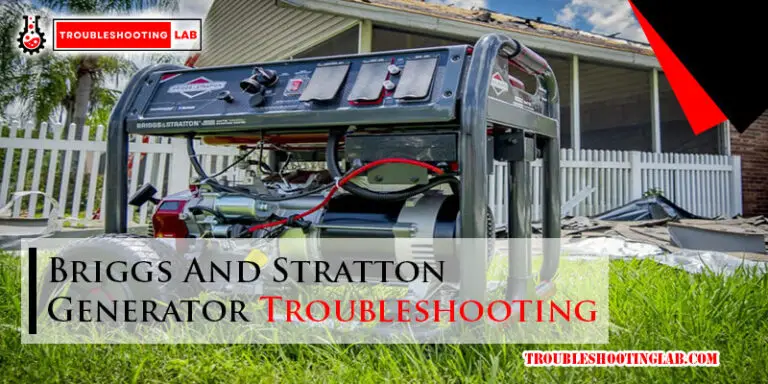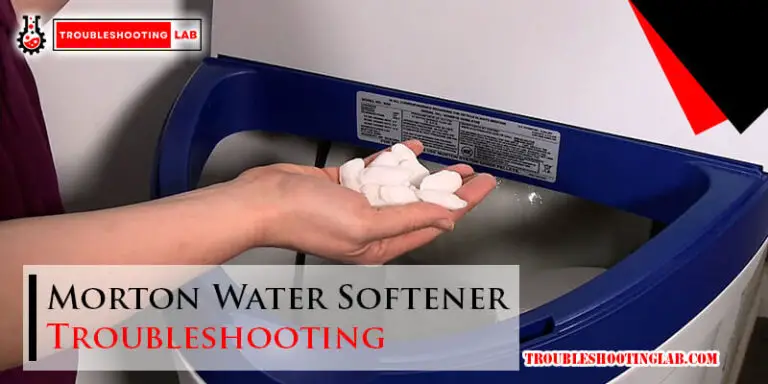Atwood RV Water Heater Troubleshooting: Fixing Common Issues
If your Atwood RV water heater is not heating on gas, check that you have enough propane in your tanks and that the service valve is fully open. If the problem persists, it could be due to a faulty gas valve or ignitor, a dirty burn chamber, or a flame issue, which would require the expertise of an RV technician for repair.
Another common issue with water heaters is a bad thermocouple, which can cause the pilot light to constantly go out. In this case, closely examine the thermocouple and consider cleaning or replacing it if necessary. The reset button for an Atwood water heater can be found on the rear of the heater, behind a cover, typically in the upper right corner area.
Understanding The Common Issues
Overview Of Common Issues With Atwood RV Water Heaters
Atwood RV water heaters are essential for providing hot water while you’re on the road. However, like any other appliance, they can experience issues that can disrupt their performance. It’s crucial to understand the common problems that can occur with Atwood RV water heaters so that you can troubleshoot and resolve them effectively.
Importance Of Troubleshooting For Optimal Performance
Troubleshooting is an essential step in maintaining the optimal performance of your Atwood RV water heater. By identifying and resolving common issues promptly, you can ensure that your water heater continues to provide hot water consistently during your travels. Not only does troubleshooting save you from inconveniences, but it also prevents potential costly repairs or replacements down the road.
Factors That Can Contribute To Common Issues
Several factors can contribute to common issues with Atwood RV water heaters. Understanding these factors can help you troubleshoot and prevent problems in the first place. Some of the common factors include:
- Gas supply issues: Insufficient propane or a faulty gas valve can prevent your water heater from heating properly.
- Ignitor problems: A malfunctioning ignitor can prevent the gas burner from igniting, leading to a lack of hot water.
- Dirty burn chamber: The accumulation of dirt and debris in the burn chamber can affect the performance of the water heater.
- Flame issues: A weak or inconsistent flame can result in inadequate heating of the water.
- Thermocouple problems: A faulty thermocouple can cause the pilot light to go out frequently.
By being aware of these factors, you can proactively address them and minimize the chances of encountering common issues with your Atwood RV water heater.
Checking The Gas Supply And Ignition
Confirming propane tanks and service valves are functioning properly:
- Ensure that your propane tanks are properly installed and securely connected to your RV’s water heater.
- Check that the service valve for the propane tanks is completely open.
- If you suspect an issue with the propane tanks, such as low propane levels or a faulty valve, consult a professional RV technician for further assistance.
Troubleshooting a faulty gas valve or ignitor:
- Inspect the gas valve and ignitor for any visible signs of damage or malfunction.
- If you notice any issues, such as a cracked gas valve or a faulty ignitor, it is recommended to replace these components with new ones.
- Contact an RV technician to properly diagnose and fix the problem.
Addressing dirty burn chamber or flame issues:
- If your RV water heater is not producing a consistent flame or the flame is yellow instead of blue, it may indicate a dirty burn chamber or other combustion issues.
- To address this, clean the burn chamber following the manufacturer’s guidelines and instructions.
- Inspect the burner orifice for debris and clean it if necessary.
- Check the gas pressure to ensure it is within the recommended range.
- If these steps do not resolve the issue, seek the assistance of an RV technician to further diagnose and repair the problem.
Remember, if you encounter any issues with your Atwood RV water heater’s gas supply or ignition, it is recommended to consult a professional RV technician for proper troubleshooting and repair.
Examining The Thermocouple
How To Identify A Bad Thermocouple
Identifying a bad thermocouple in your Atwood RV water heater is essential for troubleshooting the issue effectively. A thermocouple is a safety device that detects whether the pilot light is lit and allows gas to flow to the burner. If the thermocouple is faulty, it can cause the pilot light to keep going out or prevent the burner from igniting altogether.
To determine if your thermocouple is bad, follow these steps:
- Observe the pilot light: If the pilot light consistently goes out, even after relighting it multiple times, it is a strong indication of a faulty thermocouple.
- Inspect the thermocouple for damage or corrosion. A bent or damaged thermocouple can inhibit its proper functioning. Additionally, corrosion can disrupt the connection and prevent the pilot flame from heating the thermocouple properly.
- Test the thermocouple with a multimeter: Using a multimeter, set it to the millivolt setting and attach the thermocouple leads to determine if it is generating the appropriate voltage. A reading below 25 millivolts indicates a faulty thermocouple.
Steps To Clean Or Replace A Faulty Thermocouple
If you have identified that your thermocouple is indeed bad, you can try cleaning it before opting for a replacement. Here are the steps to clean or replace a faulty thermocouple:
- Turn off the gas supply. Before performing any maintenance on your Atwood RV water heater, ensure that the gas supply is switched off to prevent any accidents or leaks.
- Remove the access panel: Locate the access panel near the bottom of the water heater and remove it to gain access to the burner assembly.
- Clean the thermocouple: If the thermocouple is dirty or covered in corrosion, you can use fine grit sandpaper or steel wool to gently clean the tip. Ensure that the tip is clean and free from debris.
- Reinstall or replace the thermocouple. If cleaning the thermocouple does not resolve the issue, you may need to replace it. Carefully remove the old thermocouple by disconnecting it from the gas control valve and pilot assembly, and then install the new thermocouple by reversing the steps.
- Test the functionality: Once the thermocouple is cleaned or replaced, reconnect the gas supply and relight the pilot light. Observe whether the pilot light remains lit and the burner ignites. If everything is functioning properly, you have successfully resolved the issue.
Importance Of Regular Maintenance For Thermocouples
Maintaining your thermocouple on a regular basis is crucial to ensuring the proper functioning of your Atwood RV water heater and preventing any unexpected issues. Here are the key reasons why regular maintenance for thermocouples is important:
- Prevent pilot light issues: A clean and well-maintained thermocouple enables the pilot light to stay lit consistently, eliminating the hassle of constant relighting.
- Ensure gas flow safety: A faulty thermocouple can compromise the safety of your gas supply by allowing gas to flow when it shouldn’t. Regular maintenance helps to avoid potential gas leaks or accidents.
- Prolong the lifespan of the water heater: By keeping the thermocouple clean, you can extend the overall lifespan of your Atwood RV water heater. Proper maintenance prevents unnecessary wear and tear on the components.
- Optimize energy efficiency: A dirty or damaged thermocouple can affect the efficiency of your water heater, leading to higher energy consumption. Regular maintenance ensures that the thermocouple operates at its optimal level, improving energy efficiency.
By examining the thermocouple, identifying any issues, and performing regular maintenance, you can ensure the smooth operation of your Atwood RV water heater and enjoy uninterrupted hot water during your travels.
Resetting The Water Heater
Locating The Reset Button On An Atwood Water Heater
If you’re experiencing issues with your Atwood RV water heater, one of the first things you may need to do is locate the reset button. The reset button on an Atwood water heater is located on the rear of the heater, behind a cover that houses the element, thermostat (tstat), and ECO (Energy Cut Off).
To find the reset button, simply look at the back side of the heater. You should see a small hole in the upper right corner area. This hole is where the reset button is located. It is a white button that you can push through the hole to reset the water heater.
When And How To Reset Your RV Water Heater
Resetting your RV water heater can often resolve minor issues that may be affecting its performance. There are a few scenarios in which you may need to reset your Atwood water heater:
- If you have recently experienced a power outage, power interruptions can sometimes cause the water heater to trip its internal breaker, requiring a reset.
- After draining and refilling your RV water system: If you have recently drained and refilled your RV water system, it can sometimes cause air pockets or debris to interfere with the proper functioning of the water heater. Resetting it can help eliminate these issues.
- If you notice a lack of hot water or inconsistent temperatures: In some cases, the water heater may need to be reset to clear any error codes or faults that are preventing it from heating the water properly.
To reset your Atwood RV water heater, follow these steps:
- Locate the reset button on the rear of the heater, as mentioned earlier.
- Using a small object, such as a pencil or a paperclip, gently push the white reset button through the hole.
- Hold the button down for a few seconds to ensure the reset is completed.
- If successful, you may hear a click or see a light indicating that the reset has been completed.
Troubleshooting Tips For Persistent Issues After Resetting
While resetting your Atwood RV water heater can often resolve minor issues, there may be cases where problems persist even after a reset. If you are still experiencing issues after resetting, here are a few troubleshooting tips to consider:
- Check the propane supply. Ensure that your propane tanks have enough gas and that the service valve is completely open. Insufficient propane can result in a lack of heating.
- Inspect the gas valve or ignitor. If your water heater is not heating on gas even after a reset, it could indicate a faulty gas valve (solenoid) or ignitor. These components may require repair or replacement by an RV technician.
- Clean the burn chamber. A dirty burn chamber can also hinder the performance of your water heater. Ensure that it is clean and free from debris or buildup.
- Check for flame issues: If the water heater’s flame is not igniting or is not staying lit, there may be an issue with the flame sensor or gas supply. An RV technician can diagnose and fix these problems.
By following these troubleshooting tips, you can narrow down the root cause of persistent issues and potentially resolve them without the need for professional assistance.
Seeking Professional Help
Identifying Issues That Require Professional Assistance
If you’re experiencing issues with your Atwood RV water heater and basic troubleshooting methods haven’t resolved the problem, it may be time to seek professional help. Certain issues are best left to experts who have the knowledge and experience to diagnose and repair them effectively. By identifying these problems that require professional assistance, you can save yourself time and frustration while ensuring that your water heater is in good hands.
Tips For Finding A Reliable RV Technician For Water Heater Repair
Finding a reliable RV technician for water heater repair is crucial to ensuring that the job is done right. Here are some tips to help you find a trustworthy professional:
1. Ask for recommendations: Reach out to fellow RV owners, friends, or family members who have had their water heaters repaired before. They may be able to recommend a reliable technician or service center.
2. Check online reviews: Look for reviews and ratings of RV technicians in your area. Websites such as Yelp and Google Reviews can provide insights into the quality of service provided by different professionals.
3. Verify certifications and licenses: Before hiring an RV technician, ensure that they have the necessary certifications and licenses to perform water heater repairs. This guarantees that they have the required knowledge and expertise.
4. Request a quote: Contact multiple technicians and request a quote for the repair job. Compare the prices and services offered to choose the one that fits your budget and requirements.
5. Inquire about warranty: If your Atwood RV water heater is still under warranty, inquire if the technician has experience working with warranty repairs. This ensures that you don’t accidentally void the warranty while seeking repairs.
Understanding Warranty Coverage For Atwood RV Water Heaters
It’s essential to understand the warranty coverage for your Atwood RV water heater to avoid any unexpected expenses. Here are a few key points to consider:
1. Review the warranty terms and conditions: Carefully read and understand the warranty terms provided by Atwood for your specific water heater model. This will help you determine what repairs are covered and the duration of the warranty.
2. Keep maintenance records: Regularly maintain your water heater and keep detailed records of the maintenance performed. This can help support warranty claims if needed.
3. Know the limitations: Familiarize yourself with any limitations or exclusions mentioned in the warranty. Certain issues, such as damage caused by misuse or neglect, may not be covered.
4. Contact Atwood for assistance: If you’re unsure about the warranty coverage or need clarification on any aspects, don’t hesitate to contact Atwood’s customer service. They can provide you with accurate information and guidance.
By understanding warranty coverage, you can ensure that you make the most of the benefits provided and avoid unnecessary expenses for repairs that should be covered.
Remember, when it comes to troubleshooting and repairing your Atwood RV water heater, seeking professional help can save you time, money, and potential complications. By identifying issues that require expert assistance, finding a reliable RV technician, and understanding warranty coverage, you can address any water heater problems effectively and get back to enjoying your RV adventures without any worries.
Frequently Asked Questions
Where is the reset button on the RV water heater?
The reset button on an RV water heater can be found on the rear of the heater. It is a white button located in the upper right corner area, which you can push through the reset hole. Make sure to turn off the battery before testing for continuity.
Why Is My Rv Water Heater Not Heating On Gas?
If your RV water heater is not heating on gas, first check if you have enough propane and if the service valve is fully open. If the problem persists, you may have a faulty gas valve, dirty burn chamber, or flame issue. It’s best to consult an RV technician for repairs.
How Do I Know If My Thermocouple Is Bad On My Water Heater?
If your thermocouple is bad on your water heater, the most obvious sign will be a pilot light that frequently goes out. If you relight the pilot light but it gets extinguished within a week, you need to closely examine the thermocouple.
Where Is The Reset Button On An Atwood Water Heater?
The reset button on an Atwood water heater is located on the rear of the heater. It is a white button that can be found in the upper right corner area when looking at the back side of the heater.
Simply push the button through the reset hole to reset the heater. The on/off switch is located on the side of the cover, facing the coach front.
Why Is My RV Water Heater Not Heating On Gas?
A: If your RV water heater is not heating on gas, check if your propane tanks have enough gas and ensure that the service valve is fully open. If the problem persists, it could indicate a faulty gas valve, dirty burn chamber, or flame issues which may require the expertise of an RV technician for repair.
Conclusion
If you’re experiencing issues with your Atwood RV water heater, don’t worry. There are numerous troubleshooting steps you can take to identify and resolve the problem. From checking the gas valve to cleaning the thermocouple, these simple steps can often resolve common issues.
However, if the problem persists, it may be necessary to seek help from an RV technician. By following these troubleshooting tips, you can ensure your Atwood RV water heater is working efficiently and providing hot water for all your camping adventures.






